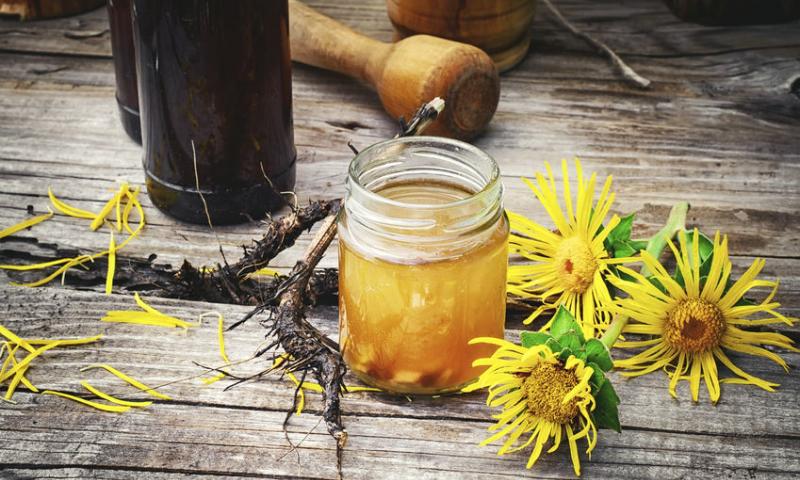 />
/>
Latin Name: Inula Helenium
Family: Asteraceae
Common Names: elfdock, horse elder, horse-heal
Origin: it is native to Europe and Asia from Spain to China, and naturalized in parts of North America
Habitat: by roadsides and in waste places of western Russia, northern Europe, and much of the United States
Part used: flowers, leaves, rootstock
Botanical information: it is a noticeable and impressive plant. The plant springs from a perennial rootstock, which is large and succulent, spindle-shaped and branching, brown and aromatic, with large, fleshy roots. Its vertical, sturdy and deeply grooved stem is from 4 to 5 feet high. It is branched on the top. Elecampane’s leaves are vast, ovate, tapered, with dentate margin, of 1-1.5 feet long and 4 inches broad. The plant is in bloom from June to August. Bright yellow flowers of 3 to 4 inches in diameter grow on long stems, resembling a double sunflower.
CHEMICAL COMPOSITION
- Inulin
- Saponins
- Resins
- Mucus
- Acetic acid
- Benzoic acid
- Alkaloids
- Vitamin E
- Essential oil
- Manganese
- Magnesium
- Potassium
- Calcium
- Iron
- Ascorbic acid
- Bitter substances
- Flavonoids
- Pectin
The tocopherol (in another way - vitamin E)

Elecampane roots are used in cosmetology: for cleansing, toning, rejuvenating the skin of the face. It is also used for hair care: the root of elecampane is a tonic and anti-dandruff remedy. Rinse hair after washing with infusion or rub it into the roots of the hair.
ELECAMPANE RECIPE
To make a decoction, place 2 tablespoons (30 g) of roots into a pot and add 1 cup (250 ml) of hot water. Cover loosely, bring to a boil, then reduce heat and simmer gently for 30 minutes. Strain. Take warm 1\2 cup (125 ml) 2-3 times daily 1 hour before meals.
“Where flowers bloom, so does hope”
Lady Bird Johnson
*This article is for informational purposes only. We suggest consulting with a physician before using these or any other herbal supplements.
